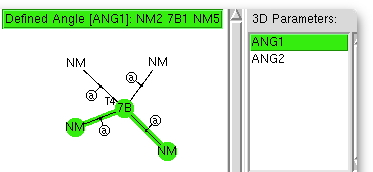The conventional procedures for reporting analysis or new results in science is to compose an “article”, augment that perhaps with “supporting information” or “SI”, submit to a journal which undertakes peer review, with revision as necessary for acceptance and finally publication. If errors in the original are later identified, a separate corrigendum can be submitted to the same journal, although this is relatively rare. Any new information which appears post-publication is then considered for a new article, and the cycle continues. Here I consider the possibilities for variations in this sequence of events.
Posts Tagged ‘data’
Questions about the (metadata) components of a scientific article.
Monday, April 8th, 2019Tags:Academic publishing, American Chemical Society, author, Business intelligence, Company: DataCite, CrossRef, data, Data management, DataCite, editor, EIDR, Information, Information science, JSON, Knowledge representation, Metadata repository, Records management, Technology/Internet, The Metadata Company
Posted in Chemical IT | No Comments »
“Richer metadata makes content more useful”
Saturday, February 16th, 2019The title of this post comes from the site www.crossref.org/members/prep/ Here you can explore how your favourite publisher of scientific articles exposes metadata for their journal.
Tags:Aaron Swartz, Academic publishing, API, Business intelligence, CrossRef, data, Data management, Elsevier, favourite publisher, Identifiers, Information, Information science, Knowledge, Knowledge representation, metadata, mining, ORCiD, PDF, Pre-exposure prophylaxis, Publishing, Publishing Requirements for Industry Standard Metadata, Records management, Research Object, Scholarly communication, Scientific literature, search engine, social media, Technical communication, Technology/Internet, text mining, Written communication, XML
Posted in Interesting chemistry | 1 Comment »
Re-inventing the anatomy of a research article.
Saturday, December 29th, 2018The traditional structure of the research article has been honed and perfected for over 350 years by its custodians, the publishers of scientific journals. Nowadays, for some journals at least, it might be viewed as much as a profit centre as the perfected mechanism for scientific communication. Here I take a look at the components of such articles to try to envisage its future, with the focus on molecules and chemistry.
Tags:Academic publishing, Acrobat, Articles, chemical discoveries, data, Data management, ELN, Information, Molecules, Narrative, PDF, Publishing, Research, Scholarly communication, Science, Scientific Journal, Scientific method, Technical communication, Technology/Internet, Web browser
Posted in Chemical IT | No Comments »
Harnessing FAIR data: A suggested useful persistent identifier (PID) for quantum chemical calculations.
Tuesday, August 7th, 2018Harnessing FAIR data is an event being held in London on September 3rd; no doubt all the speakers will espouse its virtues and speculate about how to realize its potential.♥ Admirable aspirations indeed. Capturing hearts and minds also needs lots of real life applications! Whilst assembling a forthcoming post on this blog, I realized I might have one nice application which also pushes the envelope a bit further, in a manner that I describe below.
Tags:Academic publishing, chemical context, Code, data, DataCite, energy, free energy activation barrier, Identifiers, Information, ISO/IEC 11179, ORCiD, quantum chemical calculations, real life applications, Technical communication
Posted in Interesting chemistry | 9 Comments »
FAIR data ⇌ Raw data.
Thursday, December 7th, 2017FAIR data is increasingly accepted as a description of what research data should aspire to; Findable, Accessible, Inter-operable and Re-usable, with Context added by rich metadata (and also that it should be Open). But there are two sides to data, one of which is the raw data emerging from say an instrument or software simulations and the other in which some kind of model is applied to produce semi- or even fully processed/interpreted data. Here I illustrate a new example of how both kinds of data can be made to co-exist.
Tags:computing, Context, data, Data management, Information, Knowledge, Raw data, software simulations, Technology/Internet
Posted in Chemical IT, crystal_structure_mining | No Comments »
The provenance of scientific data – establishing an audit trail.
Thursday, March 30th, 2017In an era when alternative facts and fake news afflict us, the provenance of scientific data becomes ever more important. Especially if that data is available as open access and exploitable by others for both valid scientific reasons but potentially also by those with other motives. Here I consider the audit trail that might serve to establish data provenance in one typical situation in chemistry, the acquisition of NMR instrumental data.
Tags:Acquisition, Archival science, author, collection software, Company: NMR, data, Data management, data processing software, Evidence law, instrument data collection software, local authentication systems, Mestrenova, MestreNova system, Nuclear magnetic resonance, principal investigator, Provenance, Scientific method, service manager, spectrometer software, supervisor, Technology/Internet, Terminology
Posted in Chemical IT | 2 Comments »
Tetrahedral or square planar? A ten minute exploration.
Wednesday, April 30th, 2014
I love experiments where the insight-to-time-taken ratio is high. This one pertains to exploring the coordination chemistry of the transition metal region of the periodic table; specifically the tetra-coordination of the series headed by Mn-Ni. Is the geometry tetrahedral, square planar, or other? One can get a statistical answer in about ten minutes.
 The (CCDC database) search definition required is shown above. The central atom defines the column of the period table, it is specified to have precisely four other atoms bonded to it, which can be any other element. These four bonds are specified as acyclic (to avoid any bias introduced by rings). And two angles are defined subtending the central atom. And off we go, defining on the way that the hits must be refined to an R-factor of < 0.05, have no disorder, and no errors.
The (CCDC database) search definition required is shown above. The central atom defines the column of the period table, it is specified to have precisely four other atoms bonded to it, which can be any other element. These four bonds are specified as acyclic (to avoid any bias introduced by rings). And two angles are defined subtending the central atom. And off we go, defining on the way that the hits must be refined to an R-factor of < 0.05, have no disorder, and no errors.
Tags:data, Pt[/caption] Square, search definition, transition metal region
Posted in Chemical IT, crystal_structure_mining, General | No Comments »